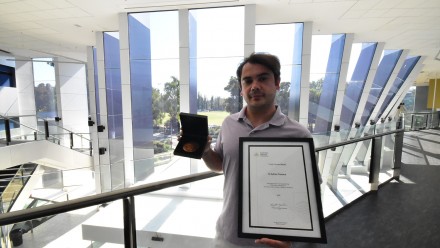Dysregulation of mRNA translation and energy metabolism in neoplasia
“Dysregulation of mRNA translation and energy metabolism in neoplasia.” by Associate Professor Ivan Topisirovic, Gerald Bronfman Dept of Oncology, Lady Davis Institute, Jewish General Hospital (Montreal, Canada)
mRNA translation is one of the most energy costly processes in the cell. Energy metabolism and protein synthesis are dysregulated in cancer. However, how mRNA translation and energy production are coordinated in mammals remains largely underexplored. The mammalian/mechanistic target of rapamycin (mTOR) is a major regulator of mRNA translation and energy metabolsim. Our recent findings demonstrate that mTOR plays a pivotal role in coordinating protein synthesis and mitochondrial energy production which is at least in part mediated by 4E-BP-dependent remodeling of the translatome. Moreover, certain 5’ UTR features seem to dictate differential modes of translation of functionally related subsets of mTOR-sensitive mRNA. Finally, translational perturbations mediated by the mTORC1/4E-BP axis appear to result in profound metabolic changes including alterations in nonessential amino acid biosynthesis, which appears to be one of the critical determinants of the anti-neoplastic efficacy of the inhibitors of oncogenic kinases and biguanides. Potential implications of these findings in targeting metabolic vulnerabilities in cancer will be discussed.
Ivan Topisirovic obtained M.D. and Ph.D. at the University of Belgrade, Yugoslavia in Dr. Romac’s lab. During his postdoc in Drs. Borden's and Sonenberg's labs, he studied the mechanisms of post-transcriptional regulation of gene expression and mTOR-dependent mRNA translation, respectively. In 2011, he became a Principal Investigator at the Lady Davis Institute, and Assistant Professor at the Department of Oncology, McGill University. Topisirovic published ~ 80 manuscripts in journals such as MCB, PNAS, Genome Res, Cell Metabolism, NRDD and Science. He is a Honorary Member of the Serbian Society for Molecular Biology and a recipient of Governor General Award for Leukemia Research, LDI Basic Scientist of the Year Award, CIHR Young Investigator Award and Junior 2 salary award from FRQ-S. Topisirovic's current research focuses on uncovering the differences between the mechanisms that coordinate translatomes and metabolomes in normal versus cancer cells, with the aim to identify therapeutically exploitable metabolic vulnerabilities of neoplasia.
Followed by
“Estrogen receptor alpha coordinates homeostatic gene expression programs via translational buffering” by Associate Professor Ola Larsson, Department of Oncology-Pathalogy, Karolinska Institutet (Stockholm, Sweden)
Estrogen receptor alpha (ERα) is a central component in breast cancer but also associates with proliferation and high clinical grade in prostate cancer. Because ERα is a transcription factor, studies aiming to understand the underlying mechanisms have focused on ERα’s association with promoter regions and downstream changes in mRNA levels. However, non-nuclear functions of ERα suggest that it may not only regulate transcription.We therefore explored the role of ERα in coordinating transcription and mRNA translation. Unexpectedly, suppression of ERα expression leads to decoupling of transcription and translation events such that transcriptional alterations caused by depletion of ERα are largely buffered at the level of translation. Accordingly, mRNAs whose levels are induced by ERα depletion exhibit reduced translation efficiency and, vice versa, mRNAs whose levels are reduced by ERα depletion exhibit enhanced translation efficiency. Such regulation is manifested at the protein level and targets a range of key cellular functions including cell metabolism.Strikingly, mRNAs whose levels increase following ERα depletion but do not change their association with polysomes, are enriched for miRNA target sites. This led us to hypothesize that up-regulation of miRNAs by ERα would mediate buffering. Contrary to this hypothesis, small RNA sequencing revealed that miRNAs are largely repressed upon ERα depletion and mediate increased levels of target mRNAs. Nevertheless, negatively regulated mRNAs targeted by up-regulated miRNAs are not buffered. Instead, mRNAs whose mRNA levels were induced but buffered via translation displayed distinct codon usage. Consistently, enzymes required for tRNA maturation were regulated by ERα and restoring their expression relieved buffering.This study suggests that, in order to cope with fluctuations in nuclear transcription factor activities, the cell has evolved complex homeostatic regulatory programs which involve translational buffering. miRNAs limit buffering of down-regulated transcriptional targets while distinct codon usage and associated tRNA requirements mediates buffering of up-regulated transcriptional targets.
Ola Larsson received a PhD from Karolinska Institutet (Stockholm, Sweden) in 2005 where he is currently appointed associate professor. His current research interests lie in the area of how selective changes mRNA translation affects compositions of proteomes. He develops and applies cellular models and high throughput methods aimed to gain mechanistic understanding regarding transcriptome wide dysregulation of mRNA translation in diseases including cancer












